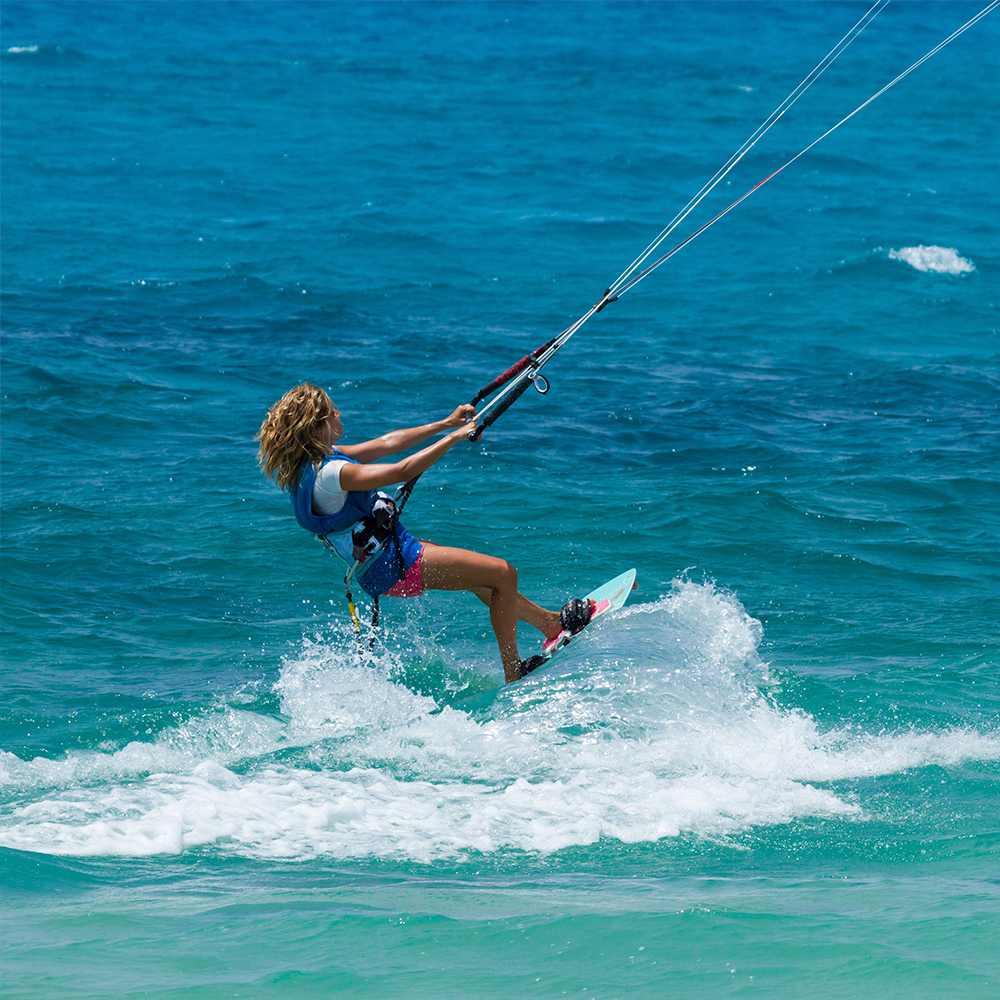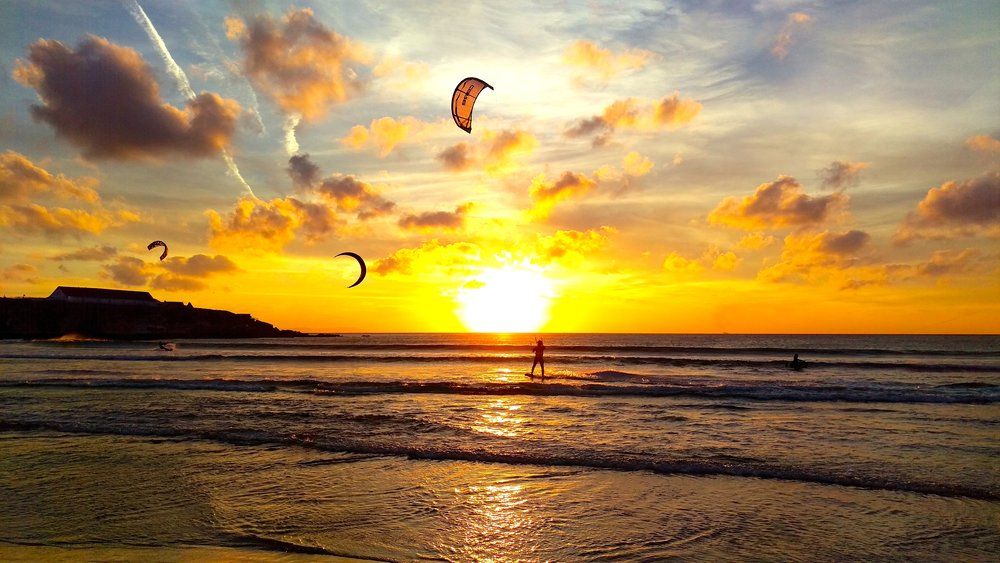
It’s that classic gym rat question:
“How much do you bench?”
It’s something I hear a lot on the beach amongst kitesurfers.
And it drives me crazy!
Many kiters seem to believe, by being able to bench press bigger weights they are going to see bigger benefits on the water.
This mentality is more than just wrong. It’s probably harmful to their kiting.
Ever see a muscle jacked professional kiter…?
Sure they’re ripped but lean rather than massive.
There is a good reason for this.
Why do footballers not look like rugby players? Why do rugby players not look like gymnasts?
Because there is an optimal strength for each sport and when you surpass this strength you are actually making your life harder.
Think of it this way.
If you’re practicing the bench press in the gym and getting stronger and stronger, that’s great, if your goal is simply to bench press more. If you’re doing it to improve your kitesurfing you have to ask yourself,
“ok well what do I actually need this movement for in kitesurfing?”
The answer for most kiters?
Pushing and pulling the bar.
Does that require you to be able to bench press 300 kilos?
NO.
In fact by being able to press 300 kgs you’ve made you’re kiting worse because you’ve now got redundant muscle. Muscle which makes you heavier (and thus less likely to get out in light wind) probably less flexible, slower and in many cases more likely to get injured (unless you have created that muscle in a balanced way, which practically no one I know does).
In short what I am trying to say is there is often a HUGE difference between maximum strength and optimum strength in any given sport.
And once you pass optimal you are by definition becoming sub optimal.
Now there is also an optimum level of speed, power, endurance and range of motion in any given sport. And imbalances in one will often upset all the rest.
Simply rocking up at the gym and doing the latest routine from Men’s Health just wont cut it for kitesurfing, in fact it’ll probably make you worse.
So before you start that new routine ask yourself, will this give you the results you want for the sport which you are doing it? If the answer’s no, find a new routine.
See you on the water,
Sam.
??
ps. I’ve spent the last 12 years putting together a kitesurf specific workout program to help you improve you kitesurfing when you’re off the water, you can check it out here >>
It’s FREE!

